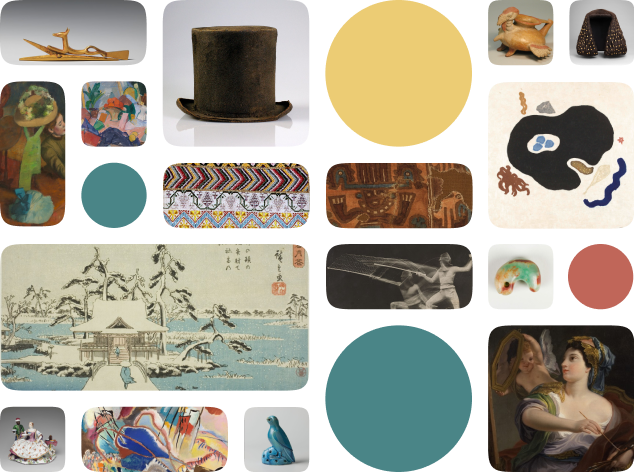Allegory of Painting
Creator Name
Cultural Context
Date
Source
About the Work
A woman contemplates her image in a mirror. She holds a painter's palette and a brush. A cherub holds the mirror, indicating this is not an image of a real painter, but rather an allegory of art itself. Drawing on Cesare Ripa's illustrated Iconologia, Corvi portrays painting as a “beautiful woman, with full black hair" and a mask.
Walters Art Museum Object Description
This young woman with her palette and brushes is not seriously engaged in painting. Contemplating her reflection in a mirror held by a winged cupid, she is a personification of the self-conscious beauty that was then the goal of art. A mask attached to her headdress with a golden chain symbolizes the potentially misleading view of reality that art can convey even when appearing to imitate nature.Corvi's buoyant, cheerful forms are close to those of French rococo art of the period.For more information on this painting, please see Federico Zeri's 1976 catalogue no. 426, pp. 536-537.For the latest information about this object, Allegory of Painting, visit the Online Collection of the Walters Art Museum.
Work details
"--" = no data available
Title
Creator
Worktype
Cultural Context
Material
Dimensions
Technique
Language
--
Date
Provenance
Style Period
Rights
Inscription
--
Location
Source
Subjects
Topic
--
Curationist Contributors
Related Content
All Works in Curationist’s archives can be reproduced and used freely. How to attribute this Work:
Domenico Corvi, Allegory of Painting, 1764. Walters Museum of Art. Corvi followed contemporary scholars’ treatises which stated that the allegory of painting should be a “beautiful woman, with full black hair.” CC0.
Help us improve this content!
Let our archivists know if you have something to add.
Save this work.
Start an account to add this work to your personal curated collection.
